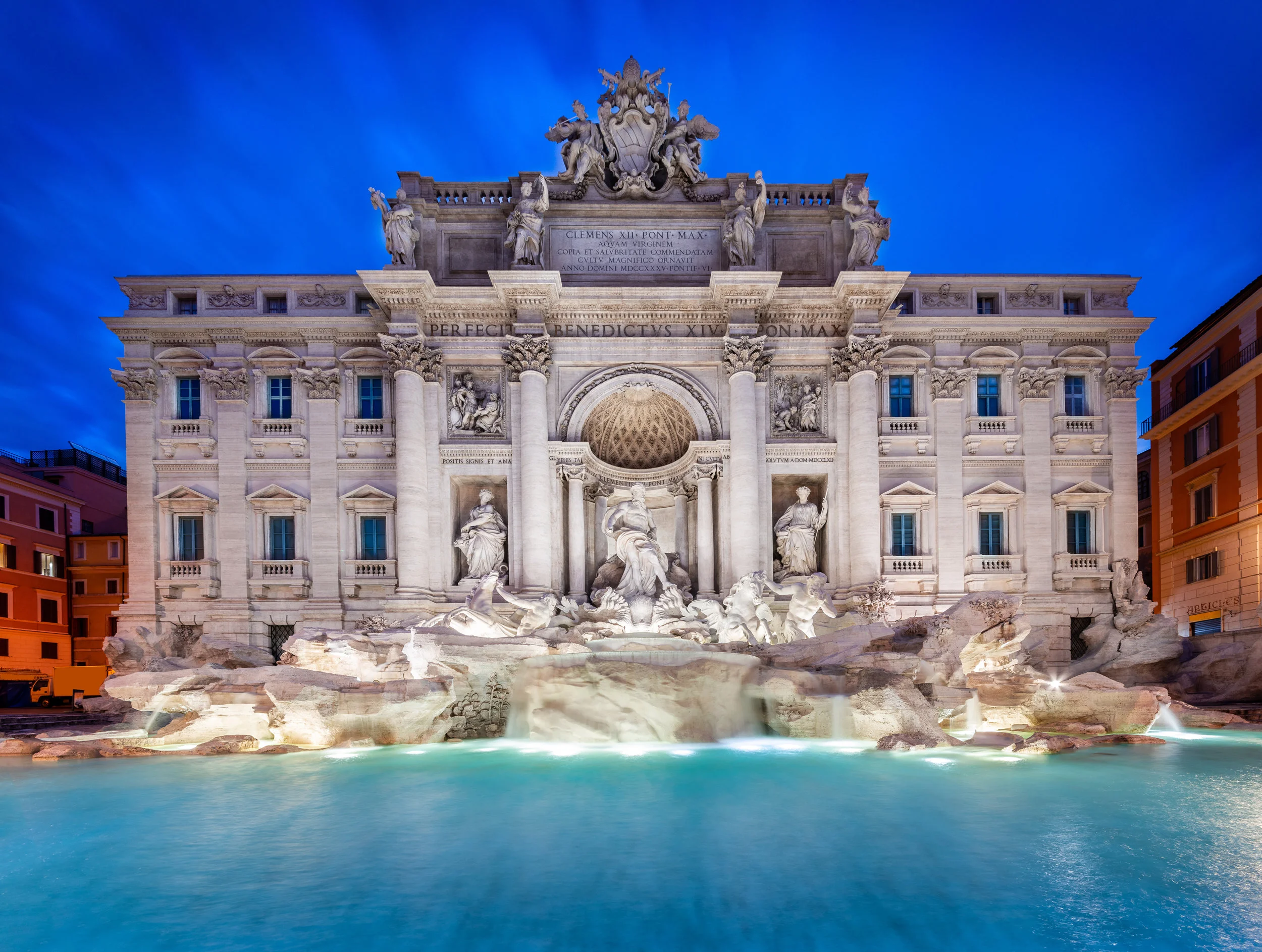THE TREVI FOUNTAIN - A symbol of Rome, between history and superstition
The Trevi Fountain is one of the most important symbols and monuments of Rome. Its realisation is due to Pope Clement XII. Among the projects presented, the pontiff chose that of architect Nicola Salvi (1697-1751), who participated in the 1732 competition together with the greatest artists of the time.
Pope Clement selected the most monumental and "least damaging project for the building behind it", on whose facade the entire fountain was inserted with a thoughtful study of proportions and decorations: it was also to be one of the symbols that would characterise Rome in the future.
The fountain, defined as a "triumphal arch with a deep niche", is formed by a large basin of water and is enlivened by the sculptural representation of numerous plants, from which a waterfall emerges. The statue of Oceano driving the shell-shaped chariot, pulled by the angry horse and the placid horse held back by two tritons, is the centerpiece.
Various allegorical figures, linked to the beneficial effects of water, decorate the front of the fountain at various levels. In Salvi's work, history and nature are perfectly blended in a dialectic relationship, as confirmed by the upcoming Enlightenment period.
Water games and allegorical figures
The construction was completed by Giuseppe Pannini (1720-1810), who partially modified the cliff, thus matching the central basins.
The fountain was subsequently restored in 1990-1991 and was subject to maintenance during 1999. The last restoration started in 2014, thanks to the sponsorship of the Fendi company, and it ended after seventeen months, in November 2015.
The Trevi Fountain is the largest in Rome and one of the most important in the world. It is also called the Rococò Fountain. Its history began, in a certain sense, at the time of Emperor Augustus, when the son-in-law Agrippa, in 19 BC, brought running water to the Pantheon and its baths thanks to the construction of the Vergine aqueduct, which can be still admired today from Piazza del Popolo.
The monument was also the protagonist, in 1960, of La dolce vita, a film directed by Federico Fellini. Everyone remembers the famous scene in which Anita Ekberg, accompanied by Marcello Mastroianni, plunges into the fountain.
The fountain early in the morning
The fame of this majestic fountain shows no signs of diminishing. Indeed, a book is also dedicated to it, titled The plants of the Trevi Fountain. On the left side, you can spot a vase made of travertine marble. It seems that a barber put it there to cover the view of the continuous works in progress that were taking place right in front of his old shop.
To conclude, it is impossible not to mention the real reason why the monument became famous all over the world. According to a self-respecting tradition, in fact, each city has its superstitious ritual. In Rome, it is the tossing of the coin in the Trevi Fountain: in this way, you are sure to return to the Eternal City.
At any time of day or night, as you pass by the fountain, you can see tourists and Romans engaged in this ritual. If looking at its waters sparkling with coins from all over the world is not enough to believe in it, we can add that about 3000 Euros a day are collected and donated to charity. It goes without saying that it is strictly prohibited and punishable by law to step into the fountain and to fish for money for personal purposes.
In short, whether you want to throw a coin or just take a picture, the advice is to visit the fountain in the early hours of the morning, when the crowd of tourists has just woken up and has not yet invaded the streets.
Cover:
The Trevi Fountain by night




